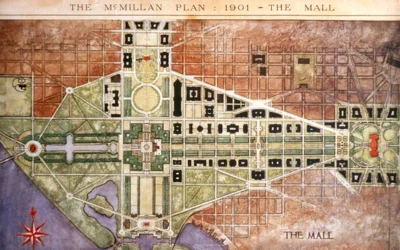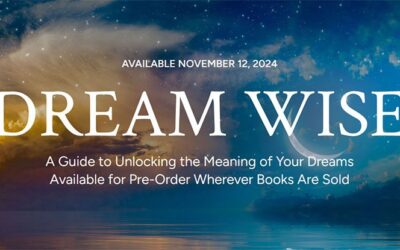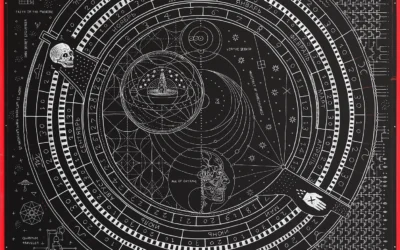
The Divided Mind and the Quest for Meaning Part 1 Part 2 >Part 3<
The Meta-Modern Mind in a Technological Age
As we explore the evolution of human thought and culture, it becomes clear that the themes of the divided mind and the misappropriation of metaphor play out not only in individual psychology but also on a larger scale through cultural movements and political tides. Just as individuals struggle to reconcile their subjective experiences with objective reality, societies grapple with the tension between competing narratives and the quest for a shared sense of meaning and purpose. In the age of post-truth and meta-modernity, this struggle has taken on new dimensions, as technological progress has transformed the way we communicate, consume information, and construct our beliefs.
Main Ideas and Key Points:
- The meta-modern age is characterized by a blurring of boundaries between fact and fiction, metaphor and literalism, leading to fragmentation and polarization.
- Peter Sloterdijk’s foam theory provides a useful metaphor for understanding the complexity and interconnectedness of contemporary society, aligning with meta-modern thought.
- The rise of digital media, social networks, and artificial intelligence has contributed to the blurring of boundaries and the proliferation of conspiracy theories and cults.
- Conspiracy theories and cults offer a seductive promise of clarity, certainty, and belonging in a world where traditional sources of meaning have been eroded.
- The meta-modern sensibility, characterized by a willingness to embrace paradox, uncertainty, and multiple perspectives, offers a framework for navigating the complexities of the post-truth era.
- The phases of modernity (premodernism, modernism, postmodernism, and beyond) and Carl Jung’s epochs (mythological, empirical, and post-secular) provide frameworks for understanding the evolution of human thought and culture.
- The post-secular epoch, as described by David Tacey, seeks to reconcile science and spirituality, embracing a more fluid and dynamic understanding of the sacred.
- The cultivation of a meta-modern sensibility and the development of a post-secular spirituality that integrates the insights of science and religion will be essential for creating a more holistic and integrated understanding of reality.
- Signs of the meta-modern sensibility are already emerging in contemporary culture, including a renewed interest in myth, symbol, and metaphor, as well as a growing recognition of the need for dialogue, empathy, and creative synthesis.
- Cultivating the meta-modern mind requires embracing complexity, uncertainty, and paradox while remaining grounded in the realities of the physical world and the needs of the human community, as well as developing new forms of technological and emotional literacy.
The Meta-Modern Mind and Sloterdijk’s Foam Theory
As we consider the implications of the meta-modern mind in our technological age, it’s illuminating to turn to the work of philosopher Peter Sloterdijk, particularly his concept of “foams” as elaborated in his magnum opus “Spheres III: Foams.” Sloterdijk’s foam theory offers a compelling metaphor for understanding the complexity and interconnectedness of contemporary society, aligning closely with many aspects of meta-modern thought.
Sloterdijk’s foam metaphor describes a world of co-fragile, interconnected bubbles, each representing individual life-worlds or microspheres. This image resonates deeply with the meta-modern sensibility, capturing both the plurality of perspectives and the delicate interdependence that characterizes our current era. Like the meta-modern mind, Sloterdijk’s foam theory acknowledges the simultaneous isolation and connection of individuals in modern society.
The foam metaphor also speaks to the fluidity and adaptability required in navigating the meta-modern landscape. Just as bubbles in foam can merge, separate, and reshape, so too must our ideas and worldviews remain flexible and open to reconfiguration. This aligns with the meta-modern embrace of paradox and multiplicity, rejecting rigid ideologies in favor of a more dynamic understanding of reality.
Furthermore, Sloterdijk’s emphasis on the co-fragility of foam bubbles echoes the meta-modern recognition of our shared vulnerability in the face of global challenges. It underscores the need for collective action and mutual support, even as we acknowledge the diversity of individual experiences and perspectives.
The concept of “foam” also provides a useful framework for understanding the role of technology in shaping the meta-modern mind. Digital networks and social media platforms can be seen as creating new forms of foam-like structures, connecting individuals across vast distances while simultaneously isolating them in personalized information bubbles. This tension between connection and isolation is a key challenge that the meta-modern mind must grapple with.
Sloterdijk’s work also points towards the importance of what he calls “atmotechnics” – the creation and maintenance of livable atmospheres. This idea resonates with the meta-modern emphasis on cultivating environments that support human flourishing, both in physical and psychological terms. It underscores the need for ethical reflection and responsible innovation in our approach to technology and social organization.
As we move forward in our exploration of the meta-modern mind, Sloterdijk’s foam theory serves as a powerful tool for visualizing and understanding the complex, interconnected nature of our world. It reinforces the meta-modern call for a more nuanced, multifaceted approach to knowledge and experience, one that recognizes both our individuality and our fundamental interconnectedness.
In embracing the metaphor of foam, we open ourselves to a vision of society and consciousness that is at once fragile and resilient, isolated and interconnected. This perspective encourages us to approach the challenges of our time with humility, creativity, and a deep sense of our shared responsibility for shaping the future.
The Rise of Digital Media and the Blurring of Boundaries
The rise of digital media, social networks, and artificial intelligence has created a landscape where the boundaries between fact and fiction, metaphor and literalism, are increasingly blurred. This blurring of boundaries has contributed to a growing sense of fragmentation and polarization, as individuals and groups retreat into echo chambers of confirmation bias and ideological extremism. The Wittgensteinian problem of language and meaning, which has long been a subject of philosophical inquiry, has taken on new urgency in a world where words and symbols can be weaponized to manipulate emotions and distort perceptions.
The Emergence of Conspiracy Theories and Cults in the Postmodern Era
One of the most striking manifestations of this fragmentation and polarization has been the proliferation of conspiracy theories and cults in the postmodern era. As traditional sources of meaning and authority have been called into question, and as the boundaries between fact and fiction have become increasingly porous, many individuals have turned to alternative narratives and belief systems to make sense of the world around them.
The role of technology in driving this phenomenon cannot be overstated. The internet and social media have made it easier than ever for like-minded individuals to connect and reinforce each other’s beliefs, creating echo chambers where conspiracy theories and fringe ideologies can thrive. At the same time, the algorithms that power these platforms have been designed to maximize engagement and attention, often by promoting content that is controversial, sensational, or emotionally charged.
The Psychological Appeal of Conspiracy Theories and Cults
But the appeal of conspiracy theories and cults goes beyond mere technological facilitation. In a world where traditional sources of meaning and purpose have been eroded, these alternative belief systems offer a seductive promise of clarity, certainty, and belonging. By providing a clear-cut narrative of good versus evil, us versus them, conspiracy theories and cults give their adherents a sense of purpose and identity, even as they isolate them from the broader society.
Moreover, as the philosopher Peter Sloterdijk has argued, conspiracy theories and cults can be seen as a form of “immunological response” to the pressures and uncertainties of postmodern life. By creating a shared narrative of victimhood and persecution, these belief systems offer a way to make sense of the chaos and complexity of the world, and to assert a sense of control and agency in the face of overwhelming forces.
The Need for a New Framework in the Meta-Modern Age
In this context, the need for a new framework for navigating the complexities of the meta-modern mind has never been greater. As David Tacey suggests in his work on the post-secular sacred, one potential avenue for reconciling the divided mind is through a renewed engagement with the realm of spirituality and transcendence. Tacey argues that the post-secular sacred represents a new mode of spiritual experience that is grounded in the individual’s subjective encounter with the numinous, rather than in the dogmas and institutions of traditional religion. This post-secular spirituality seeks to bridge the divide between the rational and the intuitive, the literal and the metaphorical, by embracing a more fluid and dynamic understanding of the sacred.
The Concept of Meta-Modernism and Its Relevance
In a similar vein, the concept of meta-modernism, as articulated by thinkers such as Timotheus Vermeulen and Robin van den Akker, offers a framework for navigating the complexities of the post-truth era. The meta-modern sensibility is characterized by a willingness to embrace paradox and uncertainty, to hold multiple perspectives in tension, and to seek meaning and purpose through a process of ongoing dialogue and negotiation. This meta-modern approach could potentially help us to reappropriate the use of metaphor and narrative in a way that is more grounded in reality and less prone to the kind of distortion and manipulation that characterizes much of contemporary discourse.
The Phases of Modernity
The evolution of human thought and culture can be understood through the lens of both the phases of modernity (premodernism, modernism, postmodernism, and beyond) and Carl Jung’s epochs (mythological, empirical, and post-secular). While these frameworks share some similarities, they also differ in important ways.
The Phases of Modernity: Premodernism, Modernism, Postmodernism, and Beyond
Premodernism
Premodernism is characterized by a reliance on tradition, religion, and myth. In this phase, knowledge is often based on authority and revelation rather than empirical evidence or reason. The world is seen as a mysterious place governed by supernatural forces, and the individual’s role is to find their place within a larger, preordained order.
Modernism
Modernism emerged as a challenge to the traditions and superstitions of premodernism. It emphasizes reason, science, and progress, seeking to understand the world through empirical observation and logical analysis. Modernism is characterized by a belief in objective truth, universal values, and the power of human reason to solve problems and improve society.
Postmodernism
Postmodernism arose as a critique of the grand narratives and universal truths of modernism. It emphasizes relativism, subjectivity, and the deconstruction of meaning. Postmodernism questions the idea of objective reality, arguing that all knowledge is socially constructed and shaped by power relations. It celebrates diversity, difference, and the play of language and symbols.
Beyond Postmodernism: Metamodernism and Post-Postmodernism
The current phase of human thought and culture, often referred to as metamodernism or post-postmodernism, seeks to move beyond the limitations of postmodernism while retaining its insights. Metamodernism embraces paradox, uncertainty, and the coexistence of multiple perspectives. It seeks to find a middle ground between the grand narratives of modernism and the relativism of postmodernism, acknowledging the importance of both objective reality and subjective experience.
Jung’s Perspective on the Phases of Modernity and the Post-Secular Sacred
Carl Jung’s understanding of the evolution of human consciousness and culture provides a compelling framework for understanding the phases of modernity and the emergence of the post-secular sacred. Drawing on the work of David Tacey, who has extended and applied Jung’s insights to the contemporary world, we can see how Jung’s theory of the mythological, empirical, and post-secular epochs corresponds to the phases of premodernism, modernism, and postmodernism, while also pointing towards a new, more integrated way of being that lies beyond.
Jung’s Mythological Epoch and Premodernism
The mythological epoch, which Jung sees as the first stage of human cultural development, is characterized by a literal interpretation of myths and symbols. In this epoch, which corresponds to the premodern era, the world is understood primarily through the lens of religious and cultural narratives, which are taken as literal truth. The boundaries between the natural and the supernatural, the literal and the metaphorical, are fluid and permeable, and there is a deep sense of connection to the sacred.
However, as Tacey notes, the mythological epoch is also marked by a lack of critical reflection on the nature of reality. The myths and symbols that shape human understanding are not subjected to rational scrutiny or empirical investigation, but are accepted as given. This lack of critical distance can lead to a kind of naive literalism, in which the metaphorical and symbolic dimensions of myth are collapsed into a flat, one-dimensional understanding of the world.
Jung’s Empirical Epoch and Modernism
With the rise of science and the Enlightenment, human culture enters what Jung calls the empirical epoch. This epoch, which aligns with the modern era, is characterized by a focus on observable, measurable, and verifiable facts. The scientific method becomes the primary means of understanding the world, and religious and mythological narratives are increasingly seen as primitive and superstitious.
As Tacey notes, the empirical epoch is marked by a growing sense of disenchantment, as the sacred is relegated to the realm of private belief and subjective experience. The world is stripped of its mythological and symbolic dimensions, and is reduced to a collection of material facts and processes. This disenchantment can lead to a kind of existential crisis, as individuals struggle to find meaning and purpose in a world that seems increasingly meaningless and absurd.
Jung’s Post-Secular Epoch and the Emergence of a New Spirituality
However, Jung also sees the possibility of a third epoch, which he calls the post-secular epoch. This epoch, which we are currently entering, seeks to reconcile science and spirituality, embracing paradox and uncertainty. In the post-secular epoch, the literal and the metaphorical, the subjective and the objective, are not seen as mutually exclusive, but rather as complementary aspects of a more integrated and holistic understanding of reality.
As Tacey argues, the post-secular epoch is characterized by a new kind of spirituality, one that is grounded in the individual’s subjective encounter with the numinous, rather than in the dogmas and institutions of traditional religion. This post-secular spirituality seeks to bridge the divide between the rational and the intuitive, the literal and the metaphorical, by embracing a more fluid and dynamic understanding of the sacred.
Tacey suggests that this new, post-secular spirituality is already emerging in contemporary culture, in the form of a renewed interest in mysticism, contemplative practice, and alternative forms of meaning-making. He sees this emergence as a response to the existential crisis of modernity, and as a way of re-enchanting the world in the face of the disenchantment and fragmentation of postmodernity.
The Meta-Modern Sensibility and the Future of Spirituality
Tacey’s vision of the post-secular sacred aligns closely with the meta-modern sensibility, which seeks to move beyond the limitations of both modernism and postmodernism. Like the post-secular sacred, meta-modernism embraces paradox and uncertainty, and seeks to find meaning and purpose through a process of ongoing dialogue and negotiation.
As we move into the future, the cultivation of this meta-modern sensibility, and the development of a post-secular spirituality that can integrate the insights of science and religion, will be essential. By drawing on the wisdom of the past, while also remaining open to the possibilities of the future, we can begin to create a new framework for meaning-making and human flourishing in an age of technological disruption and existential uncertainty.
Ultimately, the goal of this new, meta-modern spirituality is not to replace science or reason, but rather to complement and enrich them. By recognizing the importance of both the literal and the metaphorical, the objective and the subjective, we can begin to create a more holistic and integrated understanding of reality, one that honors the full complexity and mystery of the human experience.
Signs of the Meta-Modern Sensibility in Contemporary Culture
While the full flowering of the meta-modern sensibility may still be on the horizon, there are already signs of its emergence in contemporary culture. In the realm of art and literature, for example, we are seeing a renewed interest in the power of myth, symbol, and metaphor, as well as a willingness to embrace paradox and ambiguity. In the world of politics and social movements, we are witnessing a growing recognition of the need for dialogue, empathy, and the creative synthesis of opposing viewpoints.
Perhaps most strikingly, in the realm of spirituality and religion, we are seeing a surge of interest in alternative forms of meaning-making and transcendence, from mindfulness and meditation to neo-shamanism and psychedelic exploration. While these practices are often associated with the postmodern “spiritual but not religious” sensibility, they also point towards a deeper hunger for connection, purpose, and transformation that is characteristic of the meta-modern mind.
Cultivating the Meta-Modern Mind Ultimately, the cultivation of the meta-modern mind will require a willingness to embrace complexity, uncertainty, and paradox, while also remaining grounded in the realities of the physical world and the needs of the human community. It will require us to develop new forms of literacy, both technological and emotional, and to find ways to bridge the divides that currently separate us. By drawing on the insights of thinkers like Carl Jung, David Tacey, and the proponents of meta-modernism, we can begin to chart a course towards a more integrated, compassionate, and meaningful future.
Semiotics and the Meta-Modern Mind
As we explore the evolution of human thought and culture in the context of the meta-modern age, it is crucial to consider the role of semiotics – the study of signs, symbols, and their interpretation. Semiotics provides a powerful framework for understanding how meaning is created, communicated, and contested in a world where the boundaries between the literal and the metaphorical are increasingly blurred.
The Semiotic Landscape of the Meta-Modern Age
The meta-modern age is characterized by a complex and rapidly evolving semiotic landscape, in which signs and symbols are constantly being created, remixed, and reinterpreted. With the rise of digital media and the proliferation of user-generated content, the production and circulation of meaning has become more democratized and decentralized than ever before.
At the same time, the meta-modern semiotic landscape is also marked by a growing sense of fragmentation and polarization, as different individuals and groups interpret the same signs and symbols in radically different ways. This can lead to a breakdown in communication and a sense of epistemic uncertainty, as the very foundations of meaning and truth are called into question.
The Peircean Model of Semiotics
To navigate this complex semiotic landscape, it is helpful to draw on the insights of semioticians like Charles Sanders Peirce. Peirce’s model of semiotics is based on a triadic relationship between the sign, the object, and the interpretant.
The sign is the physical or conceptual representation of the object, while the interpretant is the meaning or effect that the sign produces in the mind of the interpreter. Crucially, for Peirce, the meaning of a sign is not fixed or inherent, but rather emerges through a process of interpretation and negotiation.
This dynamic, process-oriented understanding of semiotics is particularly relevant in the meta-modern age, where the meaning of signs and symbols is constantly being contested and renegotiated. By recognizing the inherent ambiguity and mutability of signs, we can begin to cultivate a more flexible and adaptive approach to meaning-making.
The Mythological and Metaphorical Dimensions of Semiotics
One of the key insights of semiotics is that signs and symbols often operate on multiple levels of meaning, from the literal and denotative to the mythological and metaphorical. In the meta-modern age, as the boundaries between these levels become increasingly blurred, it is crucial to develop a more nuanced and multidimensional understanding of how meaning is created and communicated.
This is where the work of thinkers like Carl Jung and Joseph Campbell becomes particularly relevant. Jung’s concept of the collective unconscious and his theory of archetypes suggest that there are deep, mythological structures that shape our understanding of the world, often operating below the level of conscious awareness.
Similarly, Campbell’s work on the hero’s journey and the monomyth highlights the universal, archetypal patterns that underlie many of our cultural narratives and beliefs. By recognizing the mythological and metaphorical dimensions of semiotics, we can begin to tap into these deeper layers of meaning and to cultivate a more integrative and transformative approach to communication and interpretation.
Cultivating Semiotic Literacy in the Meta-Modern Age
Ultimately, navigating the semiotic landscape of the meta-modern age will require a new kind of literacy – one that is attuned to the complex, multidimensional nature of signs and symbols. This semiotic literacy must be grounded in a recognition of the inherent ambiguity and mutability of meaning, as well as an appreciation for the mythological and metaphorical dimensions of communication.
Cultivating this kind of semiotic literacy will involve developing a more reflexive and self-aware approach to interpretation, one that is willing to question our own assumptions and biases. It will require us to engage in ongoing processes of dialogue and negotiation, both within ourselves and with others, as we work to co-create shared meanings and understandings.
At the same time, cultivating semiotic literacy in the meta-modern age will also involve developing a more critical and discerning approach to the signs and symbols that surround us. In a world where conspiracy theories and alternative facts proliferate, it is crucial to be able to distinguish between reliable and unreliable sources of information, and to develop strategies for verifying and corroborating the meanings we encounter.
Semiotics and the Future of Meaning-Making
As we move deeper into the meta-modern age, the insights of semiotics will become increasingly vital for navigating the complexities of our rapidly evolving semiotic landscape. By recognizing the dynamic, process-oriented nature of meaning-making, and by cultivating a more integrative and transformative approach to communication and interpretation, we can begin to chart a course towards a more meaningful and coherent future.
This will require us to embrace the paradoxes and uncertainties of the meta-modern mind, while also remaining grounded in the empirical realities of the world around us. It will involve developing new forms of semiotic literacy and critical thinking, while also tapping into the deeper, mythological and metaphorical dimensions of human experience.
Ultimately, the future of meaning-making in the meta-modern age will depend on our willingness to engage in ongoing processes of dialogue, negotiation, and co-creation. By working together to navigate the complex semiotic landscape of our time, we can begin to build a more resilient, adaptable, and inclusive framework for understanding ourselves and the world we inhabit.
In this sense, the study of semiotics is not just an academic exercise, but a vital tool for cultivating the kind of cognitive and emotional flexibility that will be essential for thriving in the meta-modern age. By learning to read the signs and symbols that surround us with greater nuance and sophistication, we can begin to chart a course towards a more meaningful and purposeful future for all.
The Future
As we navigate the challenges and opportunities of the meta-modern age, the cultivation of the meta-modern mind will be essential. By recognizing the similarities and differences between the phases of modernity and Jung’s epochs, and by drawing on the insights of visionaries like David Tacey, we can begin to anticipate the future of human thought and culture.
The proliferation of conspiracy theories and cults in the postmodern era is a symptom of a deeper yearning for meaning, purpose, and connection in a fragmented and uncertain world. While these phenomena are often driven by the technological affordances of the internet and social media, they also point towards a deeper existential crisis that cannot be resolved through purely rational or empirical means.
By embracing a renewed engagement with the realm of spirituality and transcendence, and by cultivating a meta-modern sensibility that is grounded in paradox, uncertainty, and the creative use of language and symbol, we can begin to chart a course towards a more resilient, compassionate, and meaningful future for all. The signs of this emerging sensibility are already visible in contemporary culture, from the resurgence of interest in myth and metaphor to the growing recognition of the need for dialogue, empathy, and creative synthesis.
As we move forward into an increasingly complex and interconnected world, the cultivation of the meta-modern mind will be essential. By learning to navigate the blurred boundaries between fact and fiction, reason and intuition, self and other, we can begin to create a new framework for meaning-making and human flourishing in the age of post-truth and technological disruption. The journey ahead will not be easy, but with courage, creativity, and compassion, we can rise to the challenge and build a better world for ourselves and for generations to come.
Read More Depth Psychology Articles:
Taproot Therapy Collective Podcast
Anthropology
Bibliography
Akker, R. van den, & Vermeulen, T. (2017). Metamodernism: Historicity, Affect, and Depth after Postmodernism. Rowman & Littlefield International.
Berne, E. (1964). Games People Play: The Psychology of Human Relationships. Grove Press.
Braidotti, R. (2013). The Posthuman. Polity Press.
Csikszentmihalyi, M. (1990). Flow: The Psychology of Optimal Experience. Harper & Row.
Deleuze, G., & Guattari, F. (1987). A Thousand Plateaus: Capitalism and Schizophrenia. University of Minnesota Press.
Edinger, E. F. (1972). Ego and Archetype: Individuation and the Religious Function of the Psyche. Shambhala.
Floridi, L. (2014). The Fourth Revolution: How the Infosphere is Reshaping Human Reality. Oxford University Press.
Giddens, A. (1991). Modernity and Self-Identity: Self and Society in the Late Modern Age. Stanford University Press.
Habermas, J. (1984). The Theory of Communicative Action. Beacon Press.
Harari, Y. N. (2018). 21 Lessons for the 21st Century. Spiegel & Grau.
Heidegger, M. (1977). The Question Concerning Technology and Other Essays. Harper & Row.
Jung, C. G. (1959). The Archetypes and the Collective Unconscious. Princeton University Press.
Kirby, A. (2009). Digimodernism: How New Technologies Dismantle the Postmodern and Reconfigure Our Culture. Continuum.
Kurzweil, R. (2005). The Singularity is Near: When Humans Transcend Biology. Viking.
Latour, B. (1993). We Have Never Been Modern. Harvard University Press.
Lyotard, J. F. (1984). The Postmodern Condition: A Report on Knowledge. University of Minnesota Press.
McLuhan, M. (1964). Understanding Media: The Extensions of Man. McGraw-Hill.
Merleau-Ponty, M. (1962). Phenomenology of Perception. Routledge.
Negroponte, N. (1995). Being Digital. Alfred A. Knopf.
Nussbaum, M. C. (2011). Creating Capabilities: The Human Development Approach. Belknap Press of Harvard University Press.
Pinker, S. (2018). Enlightenment Now: The Case for Reason, Science, Humanism, and Progress. Viking.
Postman, N. (1985). Amusing Ourselves to Death: Public Discourse in the Age of Show Business. Penguin.
Rifkin, J. (2009). The Empathic Civilization: The Race to Global Consciousness in a World in Crisis. Tarcher.
Rushkoff, D. (2013). Present Shock: When Everything Happens Now. Current.
Sloterdijk, P. (2016). Spheres Volume III: Foams, Plural Spherology. Semiotext(e).
Stiegler, B. (2010). For a New Critique of Political Economy. Polity.
Tacey, D. (2004). The Spirituality Revolution: The Emergence of Contemporary Spirituality. Routledge.
Taylor, C. (2007). A Secular Age. Harvard University Press.
Tegmark, M. (2017). Life 3.0: Being Human in the Age of Artificial Intelligence. Knopf.
Turkle, S. (2011). Alone Together: Why We Expect More from Technology and Less from Each Other. Basic Books.
Vattimo, G. (1988). The End of Modernity: Nihilism and Hermeneutics in Post-modern Culture. Polity Press.
Wilber, K. (2000). Integral Psychology: Consciousness, Spirit, Psychology, Therapy. Shambhala.
Wittgenstein, L. (1953). Philosophical Investigations. Macmillan.
Žižek, S. (2009). The Sublime Object of Ideology. Verso Books.
Zuboff, S. (2019). The Age of Surveillance Capitalism: The Fight for a Human Future at the New Frontier of Power. PublicAffairs.
























0 Comments